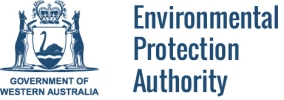EPA REPORT 1362 – Forest Management Plan 2004-2013. Mid-term audit of performance report
The Environmental Protection Authority has released its report and advice to the Minister for Environment on the Mid-term Audit of Performance Report prepared by the Conservation Commission of Western Australia on the implementation of the Forest Management Plan 2004-2013.
The mid-term audit is to provide the EPA with advice as to whether the management of land to which the Plan applies has been undertaken in accordance with the FMP.
EPA Chairman Paul Vogel said that the EPA had recommended no changes to the current Forest Management Plan, however, work on a new Forest Management Plan should start now, and the EPA has provided a comprehensive list of issues for consideration during the preparation of a new plan with climate change and governance critical matters to be addressed.
'The whole question of climate as a fundamental agent and driver of change to current values has a range of attendant issues, including sustained timber yield, disease, fire, soil and water protection,’ Dr Vogel said.
‘In the current audit lower actual yields of jarrah sawlogs than forecast is, as the Conservation Commission states, ‘likely to be subject to a number of factors’.
‘However, declining long term rainfall throughout the South West will have a deleterious effect on tree growth.
‘The EPA has serious doubts that continued logging in the low rainfall zone and adjoining medium rainfall zone in the eastern portion of the forest would be capable of meeting Ecologically Sustainable Forest Management objectives.
‘An Ecologically Sustainable Forest Management review of the low rainfall zone and adjoining medium rainfall zone in the eastern portion of the forest would clearly be a key matter for consideration in the development of the next FMP.
‘However, a ten year plan may contain levels of inflexibility that are undesirable given the uncertainties.’
‘Also, unless the existing statutory roles and responsibilities of the Conservation Commission, the Department of Environment and Conservation and the Forest Products Commission are reviewed and improved in relation to information, planning, management and activities in the forest areas, within clear policy settings, there will remain levels of mistrust and criticism of government agencies
‘Another key concern to the EPA, the Commission and the community is disease in the forest.
‘This is not only about jarrah dieback (Phytophthora cinnamomi), which has been a major focus of research and management.
‘There are a number of other Phytophthora species that have been identified in forested areas within the Forest Management Plan, as well as armillaria, especially within the karri forest.
‘The EPA is prepared to work with the Conservation Commission and government agencies to establish an appropriate framework that supports an across government approach to improved protection of the important, but threatened, flora of the State.
‘Equally important is the application of appropriate dieback management throughout all of the state, not just in State Forest areas.’
Another key component of the FMP is the establishment of new conservation reserves, most of which are already reserved as State Forest.
‘Only about 67 per cent of the total area of land category changes to formal conservation reserve have occurred, with all additions happening in the first two years of the Plan, with no further additions during 2006-2008,’ Dr Vogel said.
‘The Commission’s comment about the need for an across government approach to the implementation of these approved reserves is strongly supported by the EPA.
‘This is also an important matter for the community and many submissions expressed concern and disappointment on this crucial issue.
‘The designation of Fauna Habitat Zones was a key initiative in this FMP and it is of concern that the final guidelines for the Selection of Fauna Habitat Zones have yet to be completed by the Department of Environment and Conservation. Their approval by the Minister is already five years late and the FMP is now more than half way through its life.’
A large scale trial on whether additional water flow in streams could be generated from intensive management of vegetation, especially tree density, is currently underway in the Wungong Catchment. This is required to be undertaken in accordance with the FMP.
‘The trial objectives should more clearly align protection of biodiversity values with water production rather than potentially having one with a higher priority than the other,’ Dr Vogel said.
EPA Report 1362 is available at www.epa.wa.gov.au. There is no comment period on the report’s contents.
EPA Media contact: Charlie Maling, 6467 5415, 0400 866 450.
